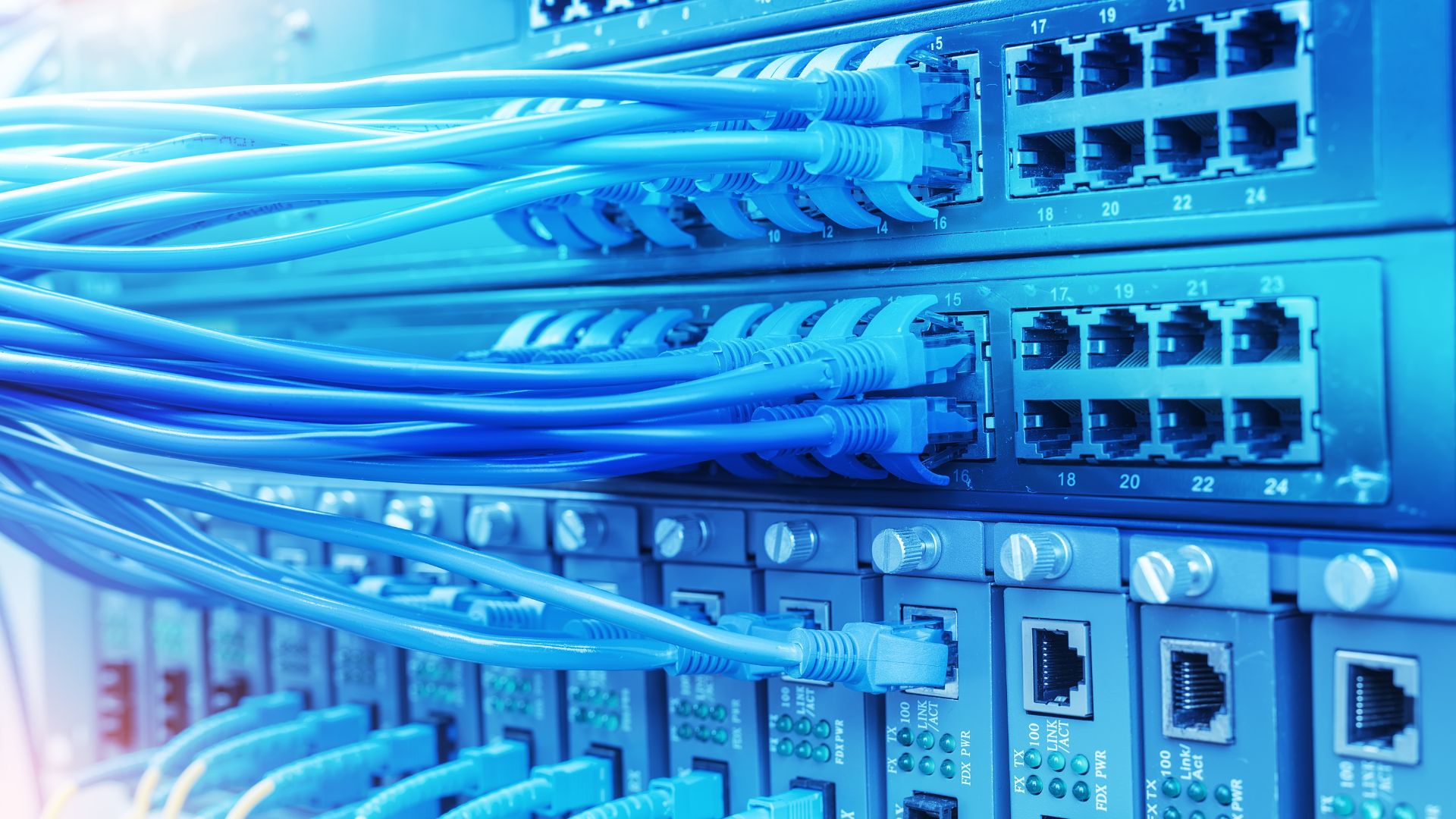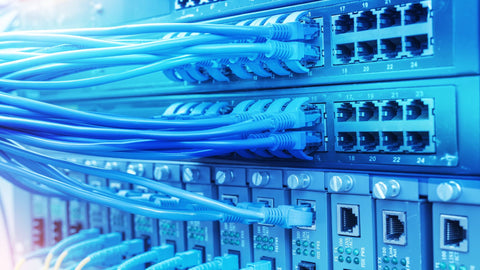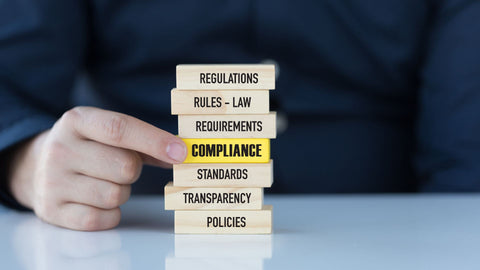
The Best Cable Solutions for 2024
When it comes to security and surveillance, the last thing you want is for your system's lifeline – its cabling – to be the weak link. Imagine the frustration of a system bottlenecked by inadequate cables, or worse, the liability of non-compliant installations in a safety-critical environment.
At BV Security, we've seen firsthand the pitfalls of overlooking these details, as well as the costly aftermath of cutting corners. With over a decade of experience in the security industry, we've honed our expertise in not just providing cutting-edge surveillance technology but also ensuring that every component of your security system, down to the cables, meets the highest standards of quality and compliance.
As we look ahead to 2024, the landscape of cable solutions is evolving rapidly, and staying informed is key to making the right choices for your security needs.
In this article, we'll guide you through selecting the best cable solutions, helping you understand the importance of data transfer capabilities, navigate the complexities of local and industry-specific compliance, and choose from the top cable solutions that BV Security offers. Plus, we’ll share insights that will not only educate but also empower you to make informed decisions that ensure your security system is robust, compliant, and ready for the challenges of tomorrow.
The 3 Key Factors Influencing Your Ideal Cable Solution Selection

The right cabling is not just about connectivity; it's about ensuring efficiency, compliance, and safety in your installation. In this section, we’ll cover the key considerations that will need to be made as you choose the best cable solutions for the upcoming year.
1. Data Transfer Needs
The type of data you need to transfer is a primary consideration. Are you setting up a large network computer system, or are you running a single account? The volume and speed of data transfer will dictate whether you need Cat5, Cat6, or even more advanced cabling. For high-definition video or large-scale network management, opting for higher-category cables can provide the necessary bandwidth and speed.
2. Compliance with Local Regulations
Local regulations can significantly impact the type of cable you need. Different areas have specific requirements, especially when it comes to the material and safety features of the cables used. For instance, in many large cities, plenum-rated cables are required for use in shared spaces of buildings due to their low smoke and flame characteristics. It's essential to be aware of these regulations to avoid costly replacements and ensure safety.
3. Industry-Specific Standards
Every industry has its own set of standards and requirements when it comes to cabling. A facility processing gasoline will have different cabling needs compared to a residential building or a fast-food restaurant. These standards are often set at the county level and require a thorough understanding of industry-specific needs. It's vital to either consult with experts who are familiar with these requirements or conduct
Navigating Legal Compliance: Choosing the Right Cable Solution

When it comes to installing a security system, navigating the maze of legal compliance is as critical as selecting the technology itself. Compliance requirements are not just a box to check; they are essential to ensure safety, reliability, and legal accountability. Here's how to approach legal compliance when choosing the right cable solution for your security needs.
Understanding Local Compliance Requirements
Compliance requirements for cabling often vary at the county level, and they can be quite specific. For instance, some areas mandate that cables must be UL-listed to meet safety standards.
In other regions, plenum-rated cables, which are designed to limit the spread of smoke and fire, are required. These regulations are in place to ensure that installations are safe and meet the highest standards of quality.
The Importance of Professional Installation
For the average person, the intricacies of legal compliance in cabling can be overwhelming. It's not practical to sift through pages of regulations to determine the specific requirements for your project.
This is where the expertise of a professional installer becomes invaluable. Installers are not only familiar with the local regulations but also stay updated on any changes. They ensure that the cabling used in your installation is compliant, saving you from potential legal and safety issues down the line.
Common Regulations
One of the most common requirements installers come across is the need for UL-listed cables. UL listing is a certification given by Underwriters Laboratories, indicating that the cable has been tested to meet specific safety standards. Many installers prefer to use UL-listed cables, not just for compliance but also for the assurance that the cable has been independently verified to perform as expected.
Unveiling Top Cable Solutions

Cat 6: The Preferred Choice
The Cat 6 cable has become the go-to option for most installations, surpassing the Cat 5E in popularity. With superior throughput and a negligible price difference—often just a few dollars more per 1,000 feet—it’s a small investment for a significant upgrade in performance. This makes the Cat 6 cable an excellent choice for those seeking enhanced network speeds without a substantial increase in cost.
The Three Main Cable Categories
BV Security carries three main categories of cables, each designed for specific environments and applications:
- CMR (Riser Rated): This is the standard cable used in most settings. It’s designed to run between floors in non-plenum areas and is suitable for general use in homes and businesses.
- CMP (Plenum Rated): The CMP cable is crafted for use in plenum spaces where air circulation for heating and air conditioning systems can cause a fire to spread. This cable is coated with a fire-retardant material that doesn't emit toxic fumes and is self-extinguishing, making it ideal for industrial settings, chemical processing areas, and places where fire safety is paramount, such as gas stations.
- CMX (Outdoor Rated): For outdoor applications, the CMX cable is the solution. It’s built to withstand the elements, from the scorching sun to the freezing cold, without degrading. This rugged cable can be buried directly, making it perfect for connecting buildings or running along the exteriors where exposure to the elements is inevitable.
Tailored Applications for Each Cable Type
Each cable type serves a distinct purpose. For instance, CMP cables are frequently used in manufacturing facilities due to their fire-retardant properties. They are also recommended for high-risk areas like gas stations, although they come at a higher cost. On the other hand, CMX cables are the solution for outdoor applications where exposure to harsh environmental conditions is a concern. They are robust enough to be buried or run along the exterior of buildings, ensuring longevity and durability.
Cable Solutions Hall of Fame: Mastering Outlandish Installation Obstacles

When it comes to cable installations, every seasoned professional has their share of stories that could easily earn a spot in the Cable Solutions Hall of Fame. These stories often involve overcoming unexpected and outlandish obstacles that put their problem-solving skills to the test.
Here are just a few of them:
The Gutter Mishap
Imagine arriving at a site to perform an upgrade, only to find the cable you need submerged in a gutter filled with water. It's scenarios like these that can turn a routine job into a nightmare, challenging installers to find innovative solutions to salvage the situation.
The Trench Tale
One particularly memorable story involves a meticulously planned installation for a security camera at a gate. The team had dug a trench, laid a pipe, and threaded the cable through, only to discover that another crew, installing an intercom, had mistaken the cable for their own and removed the pull rope needed for any future cable runs. This left the installers with an 800-foot cable run that seemed impossible to use.
In a twist worthy of a Hall of Fame induction, the team managed to pivot by relocating the PoE switch, allowing them to utilize the single cable run effectively. They installed a waterproof box to protect the connections, turning a potential disaster into a success story. This quick thinking saved the day, preventing the need to pull new cables through the lengthy trench, which would have been both costly and labor-intensive.
The Takeaway
These stories highlight the unpredictable nature of cable installations and the importance of adaptability. They also underscore the value of professional installers who bring not only their technical expertise but also their ability to think on their feet. The BV Security team recognizes these challenges and is committed to providing solutions that help navigate even the most daunting of installation obstacles. Whether it's through offering a range of durable cables or providing expert advice, our team is ready to assist customers in turning potential installation disasters into triumphs.
Summary
If you have any questions unique to your situation or need help finding the right solution, please feel free to contact one of our experts at (847) 619-2288. Additionally, you can reach us via email: support@bvsecurity.com or visit our website https://bvsecurity.com/ to view available products and latest guides.
